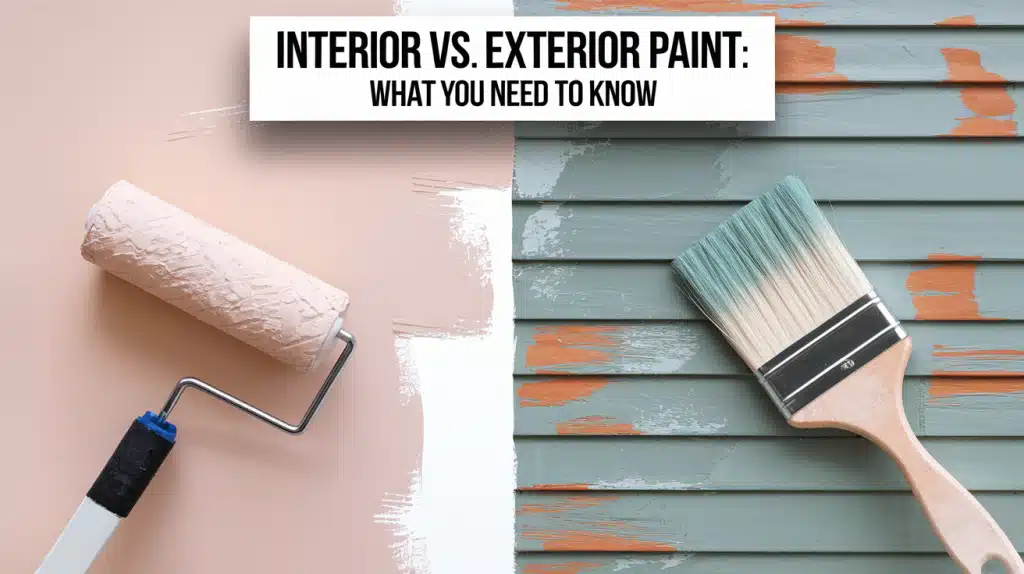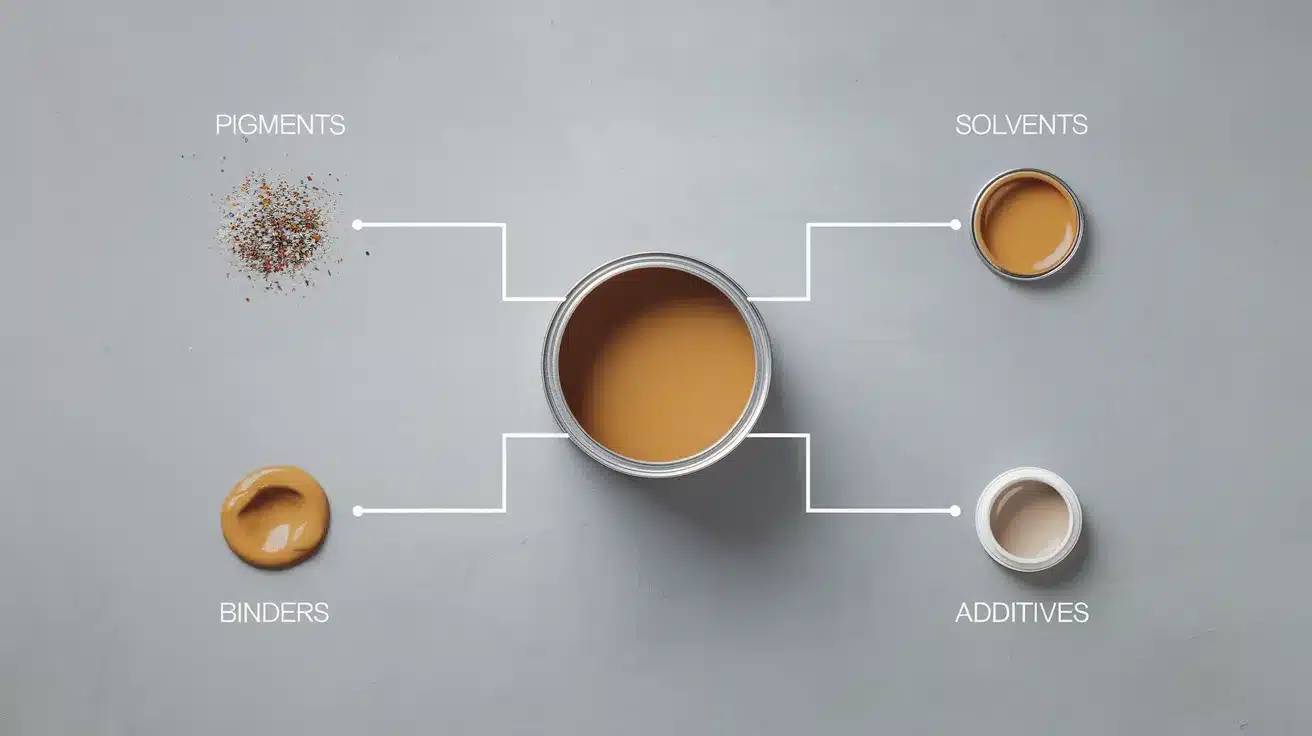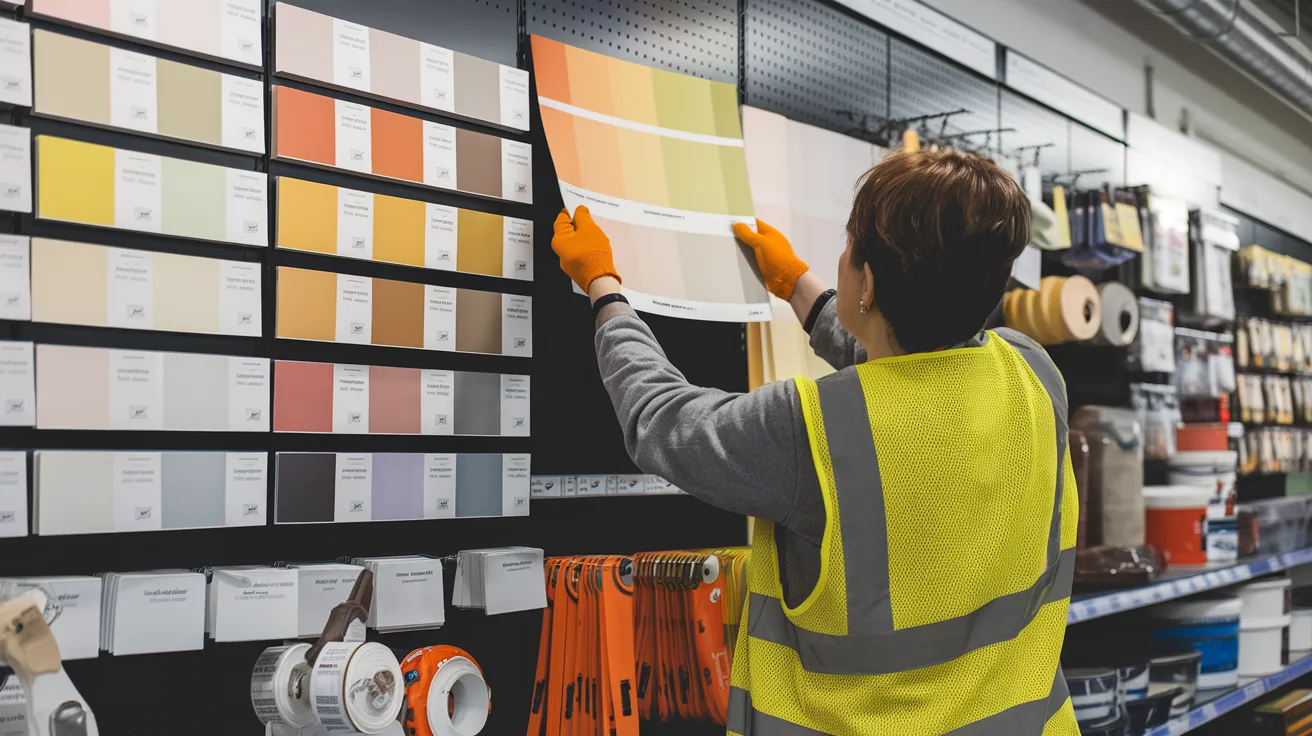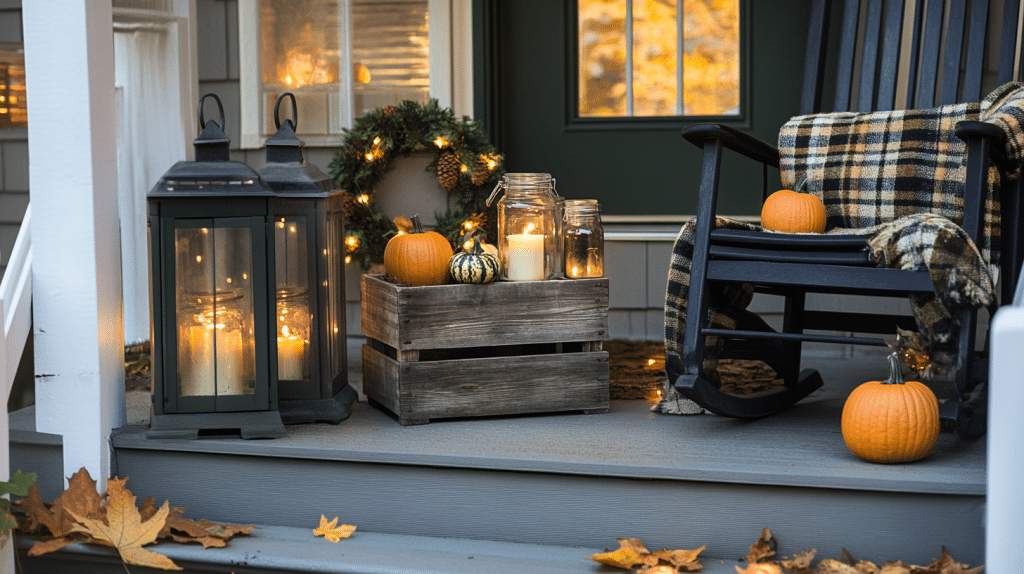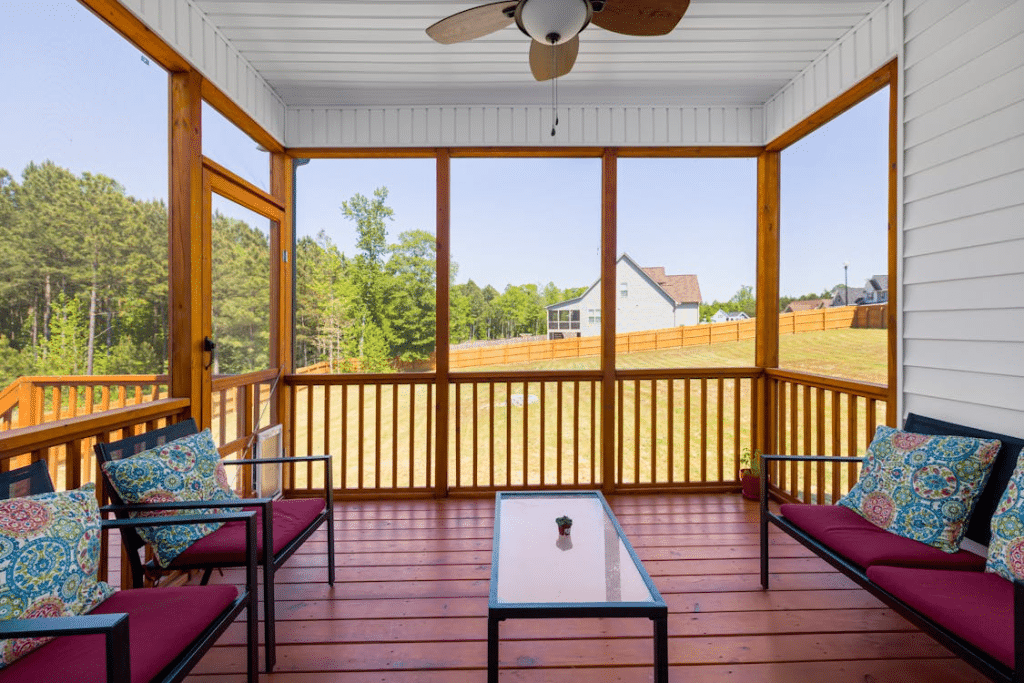Have you ever grabbed the wrong paint for your project? Picking the right paint, interior or exterior, can be tricky, but using the wrong one leads to headaches and wasted money.
I’ve seen fresh porch paint wash away after one rainstorm because someone used indoor paint outdoors. My friends also have to deal with strong smells for weeks after using outdoor paint in their bedrooms.
These paints are made differently for good reasons. Using the wrong type can affect the longevity of your paint job, your family’s health, and your budget. But don’t worry—knowing the differences is actually pretty simple.
Ready to make smart paint choices and save yourself time and money? Let’s look at what is the difference between interior and exterior paints and when you should use each one.
Understanding the Basic Components of Paint
All paints, whether for interior or exterior use, share four basic components that work together to create the final product.
Once you understand these parts, the differences between interior and exterior paints become much clearer.
The main ingredients in any paint include:
• Pigments – These tiny solid particles give paint its color and help cover the surface you’re painting. Think of them as the colorful stars of the show.
Different pigment molecules absorb and reflect specific light wavelengths, affecting how hot a painted surface gets in sunlight.
Titanium dioxide, for example, reflects UV rays, keeping walls cooler, while carbon black absorbs heat.
• Binders – These hold the pigment particles together and help them stick to the wall. Without binders, paint would be colored dust that falls right off your walls!
• Solvents – Also called carriers, these keep the paint in liquid form until applied. They evaporate as the paint dries, leaving the pigment and binders behind.
• Additives – These special ingredients change how the paint works. Some make it dry faster, others prevent mold, and some help it spread more smoothly.
The big difference between interior and exterior paints comes from the types and amounts of these ingredients.
Manufacturers adjust these components to make paint work best in different environments. Indoor paint needs different qualities than paint that faces rain, sun, and changing temperatures.
Understanding these basics helps you make better choices when buying paint for your next project!
Key Differences Between Interior and Exterior Paints
When choosing paint for your home, understanding what is the difference between interior and exterior paint is crucial for achieving the best results.
Here are the key distinctions:
| Feature | Interior Paint | Exterior Paint |
|---|---|---|
| Formulation | Smooth finish, low odor, indoor use | Stronger, weather-resistant, outdoor use |
| Durability | Less durable, suitable for normal wear and tear | Highly durable, withstands harsh weather |
| Resistance to Elements | Resists normal wear (scratches, stains) | Resists UV rays, rain, mildew, and temperature changes |
| Finish and Sheen Options | Matte, eggshell, satin, semi-gloss | Glossy finishes for moisture and dirt resistance |
| VOC Content | Lower VOCs for better indoor air quality | Higher VOCs but low-VOC options available |
| Application | Easier to apply and maintain | More complex, needs proper surface prep and maintenance |
| Ideal Surfaces | Walls, ceilings, trim, doors | Siding, decks, windows, outdoor furniture |
| Maintenance | Low maintenance, occasional touch-ups | Requires more frequent maintenance and reapplication |
How Can You Tell If Paint Is for Interior or Exterior Use
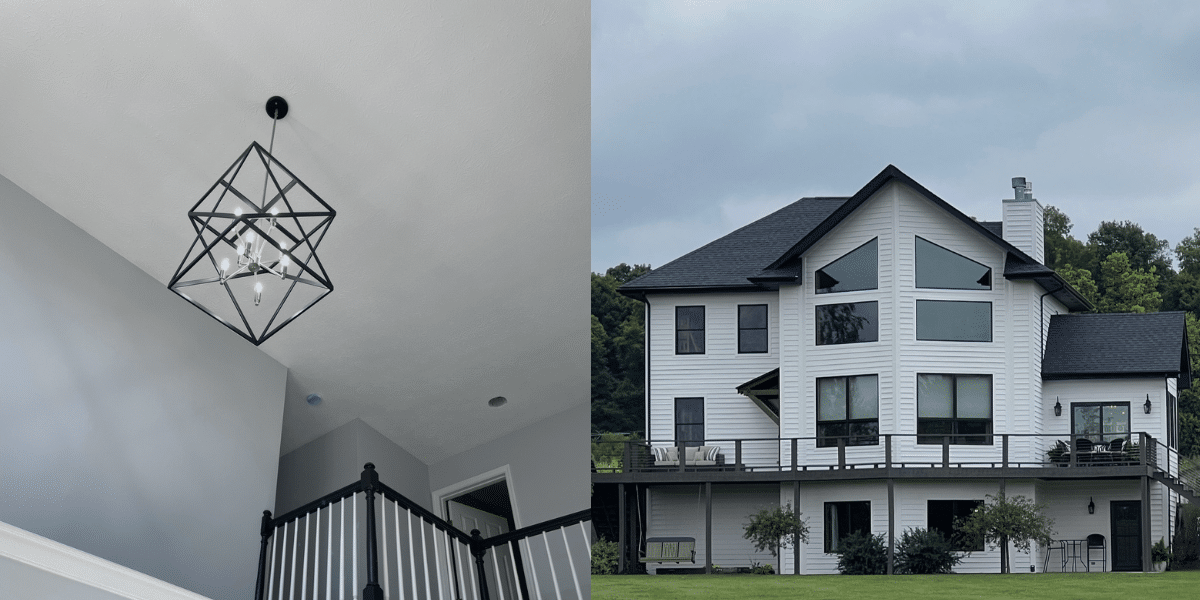
Knowing whether the paint is for interior or exterior use is important to achieve the best results for your project.
- Read the Label: Paint manufacturers make identification simple by clearly marking their products. Look for words like “Interior Paint,” “Exterior Paint,” or sometimes “Interior/Exterior” for dual-purpose formulas. This information is usually displayed prominently on the front of the can.
- Analyze the Description: Interior paint labels often mention stain resistance, Low odor or low VOC, Washable surface, and Good for bedrooms, living spaces. Exterior paint descriptions: Weather resistance, UV protection, Mildew resistance, Temperature flexibility
- Check the Price: There’s usually a clear price difference between these paint types. Exterior paints cost more money because they have extra ingredients that help them survive tough weather. So, if you’re comparing two similar paints and one costs quite a bit more than the other, the pricier one is probably exterior paint.
- Notice the Smell: Smell it quickly but gently. Paint has a stronger, harsher smell because it needs special ingredients to handle rain and sun. Inside paint smells lighter since you’ll be breathing the air around it in your home.
- Ask for Help: If you’re still unsure, ask for help! The workers at paint and home improvement stores are knowledgeable about different paints. They can examine your paint and tell you what kind it is or help you pick the right one for your project. Getting the right paint from the beginning saves you time and money. You won’t have to redo all your hard work if you use the wrong paint!
Is It Safe and Practical to Use Exterior Paint Inside Your Home?
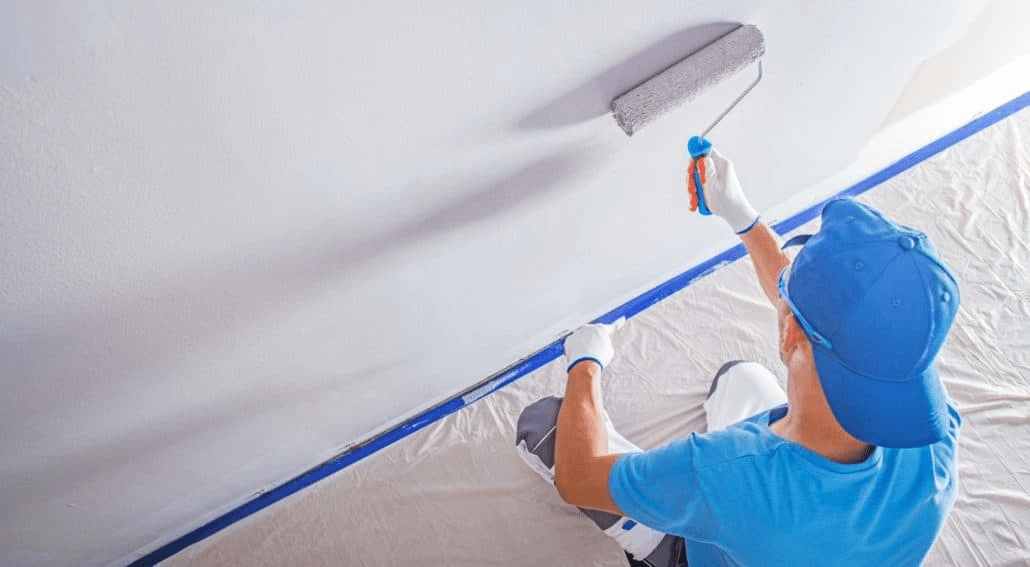
I know it’s tempting to use that leftover exterior paint for your living room walls, but here’s why you should resist:
Your Health Could Suffer: Exterior paints contain powerful chemicals designed to fight harsh weather, mold, and UV rays. Inside your home, these chemicals have nowhere to go except into your air.
It Won’t Look Right: Have you ever noticed how exterior paint looks and feels different? It’s often thicker and rougher to withstand outdoor conditions.
On your indoor walls, this can create an uneven finish that collects dust and feels tacky for months.
The Smell Can Last Forever: That paint smell that normally disappears in a few days? Exterior paint used indoors can linger for weeks or even months because the stronger chemicals take longer to release fully.
Exceptions: When You Might Use Exterior Paint Inside
If you absolutely must use exterior paint indoors, limit it to:
- Unheated garages or workshops that are well-ventilated
- Basement concrete floors that need moisture resistance
- Interior window sills that get heavy condensation
- Laundry rooms with high humidity (though bathroom-specific interior paint is better)
Remember that even in these cases, you should ensure excellent ventilation during and after painting and consider using newer exterior paints with lower VOC formulations.
Health & Environmental Impact: The Real Cost of Paint VOCs
Regular paint contains chemicals called VOCs that escape into the air when you paint and for years afterward.
These chemicals can cause immediate headaches, breathing problems, and eye irritation. Over time, they might damage your liver, kidneys, and nervous system, with some VOCs even linked to cancer.
Children, elderly people, and those with asthma face the biggest risks. Beyond personal health, VOCs create smog when they mix with sunlight and can pollute soil and water.
The good news is that safer paints with low or no VOCs are now widely available and work just as well.
How to Select the Right Paint for Your Home’s Needs
Is your paint choice making your home look amazing or setting you up for disaster? I’ve seen beautiful homes ruined by the wrong paint choice.
Don’t let yours be next! Here’s how to pick the perfect paint every time:
For INSIDE your home:
- Living rooms & bedrooms: Choose interior paints with stain resistance that look great in lamp light
- Kitchens & bathrooms: Look for moisture-resistant, scrub-friendly formulas
- Kids’ spaces: Washable, durable paints are your secret weapon!
For OUTSIDE your home:
- Siding & trim: Weather-resistant exterior paints prevent costly repairs
- Decks & porches: Special deck paints prevent splinters and rot
- Fences & outbuildings: UV-protected formulas stop fading and peeling
Pro tip: Health matters, too! Low-VOC paints keep your family safe from harsh chemicals. VOCs (Volatile Organic Compounds) are gases that are released from paint as it dries and for months afterward.
Remember: The right paint saves money by lasting longer and looking better. Take home samples before committing to a full purchase – your future self will thank you!
The Bottom Line
Now you know that what is the difference between interior and exterior paints and how to choose the right one for your project!
Why does this matter? Using the correct paint ensures durability, safety, and value for your money.
The right paint makes your home beautiful and protected from daily indoor wear and harsh outdoor elements.
What’s your next step? Check those old paint cans in your garage before using them, and when shopping, carefully read labels to confirm you’re buying the appropriate type for your project.
Remember: Interior paint is for indoor comfort, and exterior paint is for weather protection. Do you have questions about your specific painting project? Leave a comment below!


